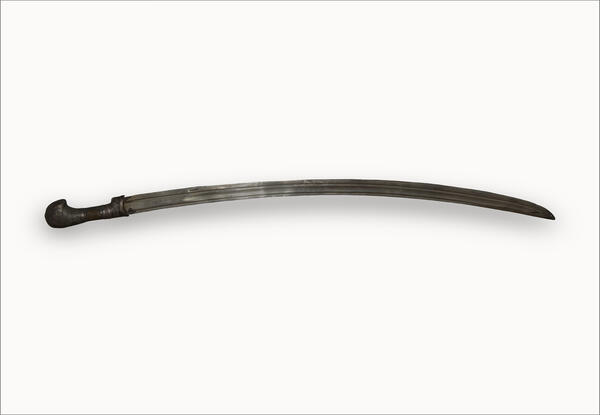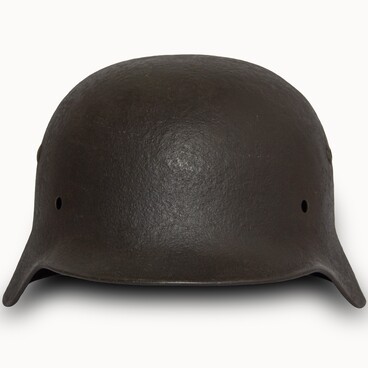In November 1927, by order of the Revolutionary Military Council No. 583, a new standard cavalry shashka was adopted by the Red Army. In many ways, it was similar to the 1881 dragoon saber.
A single blade size of 32 inches was approved for the Soviet shashka. The 1927 cavalry shashka was produced between 1928 and 1946. It was manufactured mainly at a factory in Zlatoust.
For 18 years, the design of the shashka remained unchanged. The main differences concerned the metals that were used for producing the shashka, as well as the decorative design of the grip and the manufacturer’s marks.
The shashka had a piercing tip. Because of a special sharpening method, the shashka could be used to make reverse strikes, including in order to cut the tendons while moving the blade backward after a failed stab.
The shashka possesses historical and cultural value as an example of a cavalry weapon. It was used for attacking both foot and horse-mounted soldiers. This bladed weapon required skills that could only be mastered with experience and intensive daily training. After the Great Patriotic War, the cavalry was disbanded. Accordingly, the cavalry shashka of the 1927 model was no longer used.
This 1927 cavalry shashka with a silver grip belonged to Yakov Nikolayevich Neumoyev, a cavalry commander, and a participant in the Great Patriotic War. He demonstrated his talent as a commander during the defense of Hill 247 in the area of the Nevel road.
For the exemplary performance of the assigned combat missions, as well as for his courage and heroism, he was awarded the Gold Star medal of the Hero of the Soviet Union, and a saber with a silver grip.
He served in the army throughout the entire war and was among the first Soviet officers to meet with the American allies on the Elbe. After the war, he returned to Tyumen and for a long time was the head of the local racetrack. A garden square was named after Neumoyev and a monument to him was erected in Tyumen.
A single blade size of 32 inches was approved for the Soviet shashka. The 1927 cavalry shashka was produced between 1928 and 1946. It was manufactured mainly at a factory in Zlatoust.
For 18 years, the design of the shashka remained unchanged. The main differences concerned the metals that were used for producing the shashka, as well as the decorative design of the grip and the manufacturer’s marks.
The shashka had a piercing tip. Because of a special sharpening method, the shashka could be used to make reverse strikes, including in order to cut the tendons while moving the blade backward after a failed stab.
The shashka possesses historical and cultural value as an example of a cavalry weapon. It was used for attacking both foot and horse-mounted soldiers. This bladed weapon required skills that could only be mastered with experience and intensive daily training. After the Great Patriotic War, the cavalry was disbanded. Accordingly, the cavalry shashka of the 1927 model was no longer used.
This 1927 cavalry shashka with a silver grip belonged to Yakov Nikolayevich Neumoyev, a cavalry commander, and a participant in the Great Patriotic War. He demonstrated his talent as a commander during the defense of Hill 247 in the area of the Nevel road.
For the exemplary performance of the assigned combat missions, as well as for his courage and heroism, he was awarded the Gold Star medal of the Hero of the Soviet Union, and a saber with a silver grip.
He served in the army throughout the entire war and was among the first Soviet officers to meet with the American allies on the Elbe. After the war, he returned to Tyumen and for a long time was the head of the local racetrack. A garden square was named after Neumoyev and a monument to him was erected in Tyumen.






